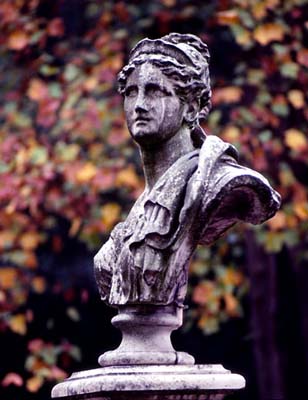Digital imaging reveals the secrets of Roman statues
 Washington, April 7: Researchers are using cutting-edge imaging techniques in the digital restoration of a
Washington, April 7: Researchers are using cutting-edge imaging techniques in the digital restoration of a
2000-year old Roman statue, providing clues to the decoration of Roman statues that had previously been only guessed at.
According to a report by Media Newswire, the delicately painted statue, which was discovered in the ancient ruins of Herculaneum in 2006 and believed to depict an Amazon Warrior, is now the subject of a joint restoration project by the University of Southampton, the University of Warwick, and the Herculaneum Conservation Project.
The head of the Amazon Warrior was discovered in 2006 in the ancient ruins of Herculaneum, a town close to Pompeii, which was buried in the AD79 eruption of Mount Vesuvius.
The delicate painting of the statue’s features and its fine state of preservation meant that it was regarded as a landmark discovery by archaeologists, providing clues to the decoration of Roman statues that had previously been only guessed at.
Highly sophisticated digital imaging is vital for the recording, subsequent analysis and restoration of cultural heritage material.
Experts in archaeological computing led by Dr Graeme Earl of the Archaeological Computing Research Group in the School of Humanities, used a novel form of photography – Polynomial Texture Mapping ( PTM ), developed by HP Labs - to provide a detailed record of the texture and color of the painted surfaces.
A specially-designed rig, camera structure, and associated custom software was developed in the School of Electronics and Computer Science by Dr Kirk Martinez and the team in the Mechanical Workshop to enable very fast acquisition of PTM data, with variable sample sizes.
The rig uses a lightweight tripod running on battery power, making it adaptable enough to use on archaeological sites.
The whole kit is highly portable and can be carried in a suitcase.
The series of images resulting from the scanning process is used to produce a single PTM file via the HP Labs PTM fitter software.
“It was fascinating to pull together various elements from my imaging research projects in order to solve all the issues for the new rig design,” said Kirk Martinez.
“Our work at Southampton bridges the gap between computing and archaeology in bringing the best that colleagues in engineering, electronics and computer science have to offer to unique artefacts from our past,” said Dr Earl. (ANI)